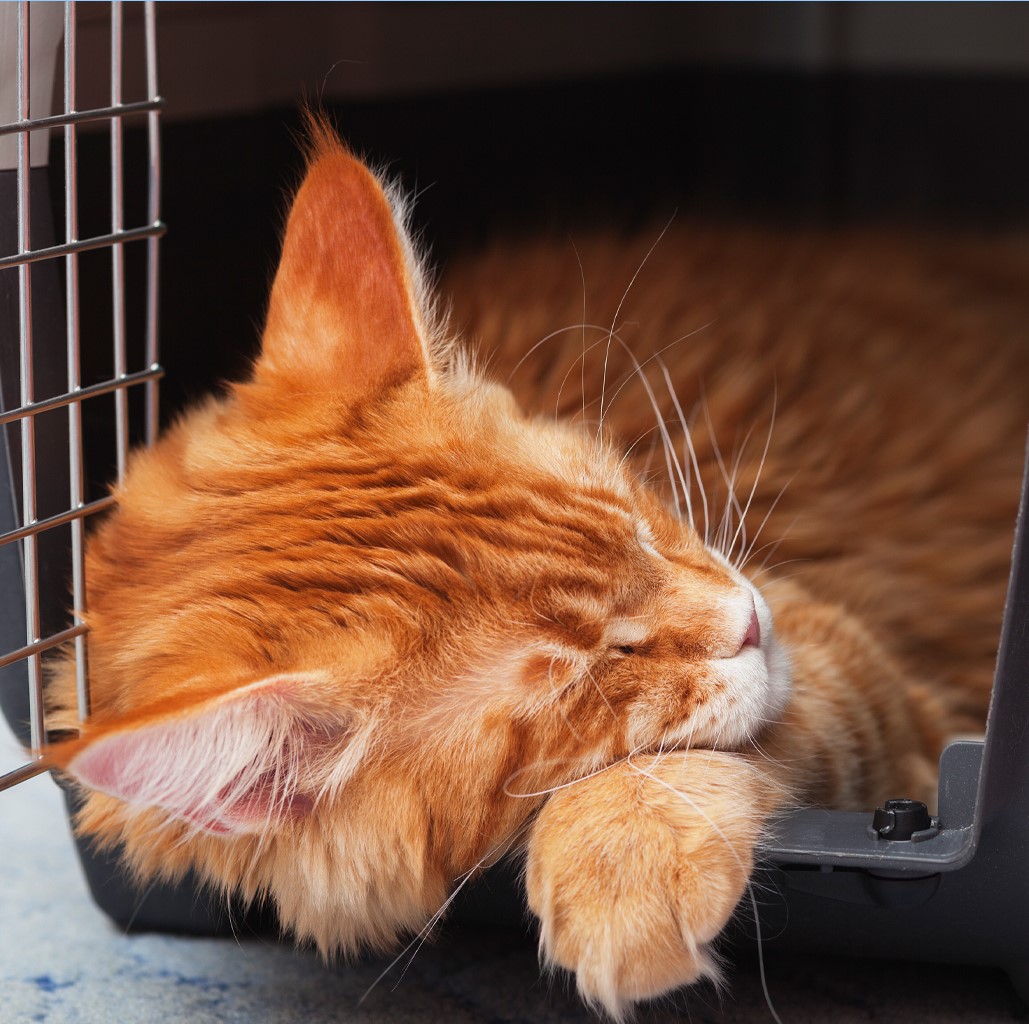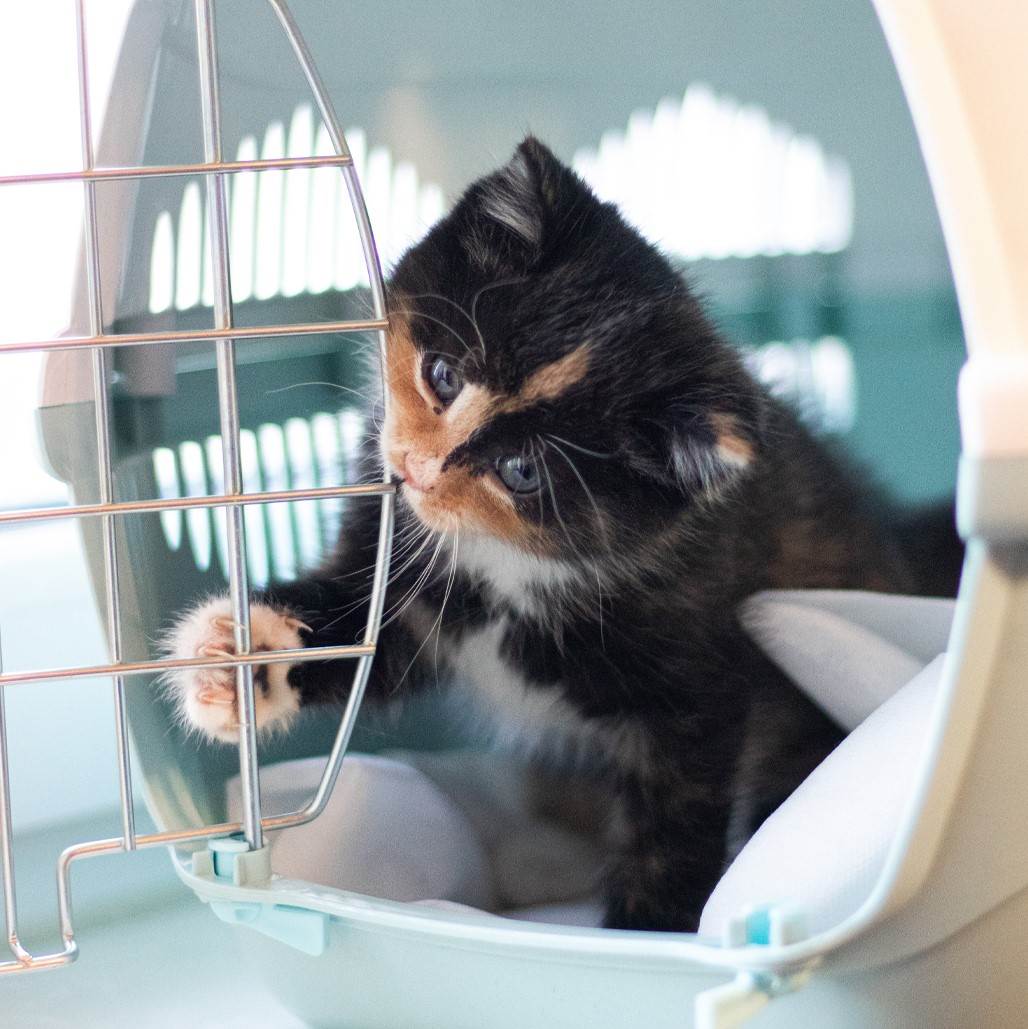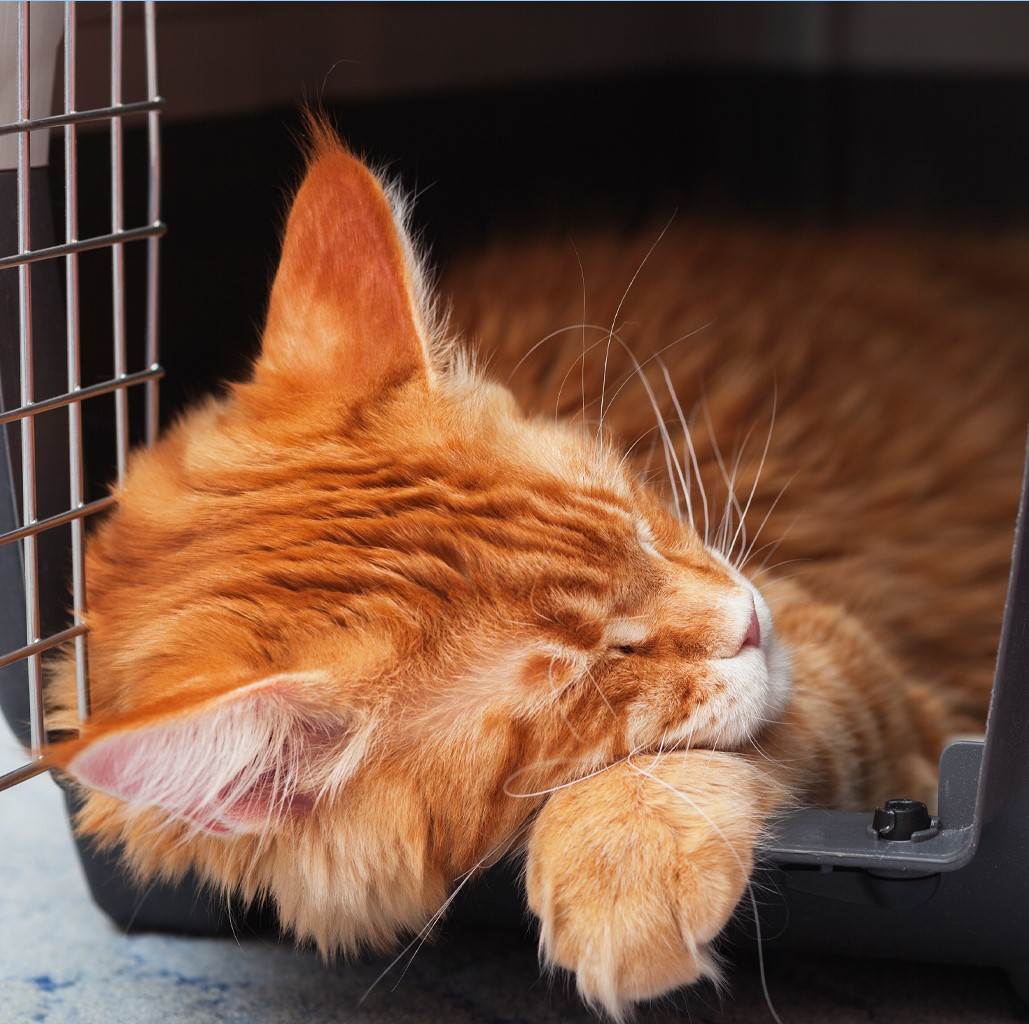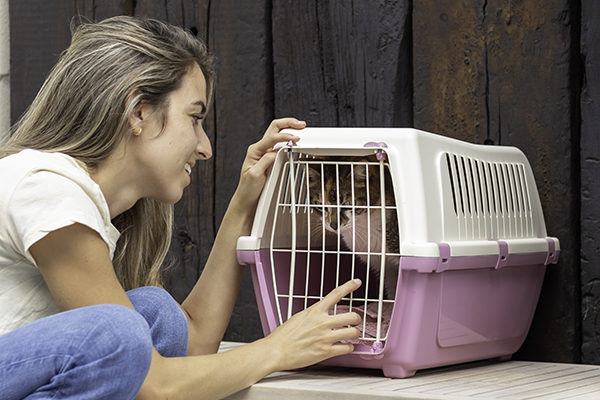Help your cat accept their carrier: A stress-free training guide
Does your feline friend dread even the sight of their carrier? Most cats associate carriers with earlier negative experiences, leading to resistance and stress. But fear not, there’s a way to change this!
By training your cat to embrace their carrier, you can reduce travel-induced stress and make it easier to get them inside. The key is to make the carrier a positive part of their daily life, not just a symbol of unwelcome journeys.
Here’s a practical, step-by-step guide for building positive associations with the carrier, turning it into a stress-free zone.
Before you begin:
· Ensure your cat experiences zero fear or stress during the training. Any anxiety during this period can undo your progress. Keep background noise, movement, and odours to a minimum while training.
· Discover your cat’s preferred treats and use them as rewards for desired behaviours. They should only receive these irresistible treats when they voluntarily enter (or approach) the carrier. This will help your cat build a positive connection by associating the carrier with their cherished treats.
· Keep the training sessions short. Aim for a couple of minutes at the same time every day, or two 1-minute sessions e.g., before their morning and evening meals.

Step 1: Familiarising your cat with the carrier
Begin by making the carrier a constant presence in your home. Place it in an area where your cat already feels secure, such as near the couch or your bed. Start the process by initially removing the top and door, if possible. Next, put one of your cat’s beloved beds inside the open carrier. You can even add an item of your clothing with your scent for extra comfort or a few of your cat’s favourite toys. Allow your cat the freedom to either ignore or investigate the carrier as they please.
After several days or weeks, your cat should become rather indifferent to the carrier or show some curiosity. Don’t be in a hurry to move to the next stage. Make sure your cat is entirely at ease with the carrier’s presence in the room before moving on.
If your cat becomes highly anxious when they see the carrier, take a softer approach. Start by offering them treats on a blanket or towel on the floor of the room where you plan to conduct the training. Do this for a few days without the carrier in the room. Once your cat is comfortable, place the carrier to an open space in the same room before the next training session. Continue to give treats on the bedding daily, gradually moving it closer to the carrier (only move the bedding when your cat is not in the room). If your cat becomes uneasy, take the bedding to a less threatening distance until they relax again. Then try to move it closer to the carrier the following day. When your cat comfortably enjoys their treats in front of the carrier, they’re ready for the next step.
Step 2: Encouraging your cat to enter the carrier
Start by placing some irresistible treats just inside the carrier’s entrance. If possible, make sure your cat is nearby and aware that you’re placing something in the carrier, but don’t make a big fuss about it. If they initially ignore it, exercise patience and continue trying.
As your cat begins to nibble treats from the front of the carrier, gradually move them further inside until they reach the back. Ensure the environment stays quiet and calm during this process to avoid startling your cat with sudden noises or movements while they’re inside the carrier. If your cat starts eating inside the carrier, make it a practice to feed them there for a while.
Step 3: Reintroducing the carrier’s top
After your cat has grown comfortable with the open carrier, it’s time to reintroduce the carrier’s top. Begin by placing the top on the floor next to the carrier. As your cat becomes accustomed to the top’s presence, gradually move it closer to the carrier until you can finally secure it in place. Be sure to do this when your cat is not nearby. Continue using their favourite treats whenever your cat willingly enters the carrier.
If your cat hesitates to enter the carrier with the top on, take a step back. Place the bedding outside the carrier once again and offer tasty treats on it. Slowly transition the bedding back inside the carrier, even if it means moving just a small distance each time. Once your cat comfortably reclines on the bedding inside the carrier for a few minutes each time, you’re ready to move on to the next step.

Step 4: Securing the carrier door
Reattach the carrier door when your cat is not in the room. Consider taping or tying the door open to prevent it from swinging back and forth. When your cat is comfortable entering the carrier with the door in place, try to close the door partially, then promptly reopen it, offering a treat. Gradually increase the door’s closure with pauses and treat rewards between each adjustment. Repeat this process until you can fully close the door (without locking it) while your cat stays relaxed inside.
If your cat gets anxious while inside or moves toward the door, open it right away and let them exit. This way, they keep a sense of control. Gradually extend the time with the door closed, ensuring your cat stays composed in the carrier with the door shut for a few minutes. Should your cat become stressed or agitated, consider slowing down and returning to the earlier step where they felt comfortable.
Once you can gently shut the door while your cat is inside without a negative response, you can begin locking the door while they eat (or give treats through the carrier bars or vent holes). Begin with just a few seconds, and if your cat becomes distressed, promptly open the door. Eventually, you’ll be able to leave the door closed for a few minutes after they’ve finished their food. When you’re confident your cat is comfortable spending the typical car travel duration in the locked carrier, open the door again, offer some treats, and allow your cat to exit.
Step 5: Lifting and carrying the carrier
Start by simply touching the handle as though you’re going to lift the carrier. Pause and offer treats through the carrier bars while speaking soothingly to your cat. If they stay relaxed, try lifting the carrier a few inches off the ground and gently place it back down. Maintain your calming voice and give treats through the bars. If your cat appears panicked, meows, or begins pawing at the door, open the carrier and let them out. You can try this step again another time, retracing a couple of earlier stages.
Once your cat is at ease with you lifting the carrier, gradually progress to taking a few steps while holding it. Afterward, set the carrier down and offer treats through the bars. Continue this process until you can carry your cat to another room, then toward the front door, and eventually outside and into the car. If possible, use one hand on the handle and the other underneath to prevent the carrier from swaying or wobbling.
Important: Being lifted off the ground and carried can be stressful for cats as they prefer feeling in control. Take your time, and don’t be discouraged if you need to revisit earlier training steps.
Step 6: Setting up the carrier as a safe haven
After successfully completing the earlier steps, leave the carrier (with the door removed) in a secure spot within the room your cat frequents the most. This allows your cat to stay accustomed to its presence, not just associating it with negative experiences like vet visits. Periodically, place some treats or your cat’s favourite toys inside the carrier. Some cats also like their carrier to be covered with a blanket.
The time needed for this process varies from one cat to another. Different cats may find specific steps more challenging, so it’s essential to pay attention to their body language and reactions and not rush them. Earlier experiences also matter. If your cat hasn’t had any prior negative encounters with their carrier, you may be able to complete many of the steps in just one or two training sessions. However, if your cat already harbours fear of the carrier, the training process may extend over several weeks, or even months.
With patience and persistence, you can help your feline friend feel more at ease with their carrier, ensuring stress-free adventures together in the future!




